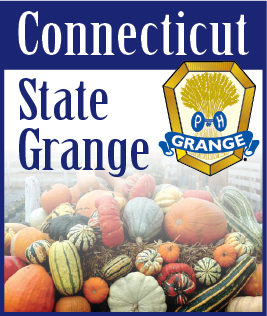| MARCH 1, 2023 -- As we have been researching each Connecticut Grange for the History Book project, we are collecting all sorts of historical data from newspaper clippings to old program pamphlets, to photos, memorabilia and more. But in doing so, we’ve had many questions regarding why historical data is so import- ant to the Grange today, and how Granges can benefit by utilizing that information. Historical profiling is an important step to depict the Grange’s remarkable past and help secure a firm foundation for the road ahead.
In a business setting, historical data is used to make important strategic decisions about the present and future of that business. For example, Managers use historical data to track organizational performance over time, identify areas of interest, increase employee productivity, and to make predictions about future trends. Historical data is essential for discovering cause and effect patterns, identifying and predicting trends, enhancing customer relations, and much more.
In a personal example, when you are navigating the job market you build a resume, which is basically a summary of your work, education and organization history. It’s a historical timeline of your work life.
In another example, researching genealogy and creating a family tree is documenting the historical data of your family from past to present.
Even your Facebook profile is a digital historical profile as it documents points over time, and as such, is a virtual timeline of in- formation that you have chosen to share online.
Historians research, log, analyze, interpret and write about the past by working with various historical documents and sources.
Documenting history and mile- stones, and developing a timeline in chronological order, helps us to build a picture of the past and understand the cause and effect of the development of the subject - a business/organization/person. This act ultimately gives us insight looking forward.
As the landscape is continually changing for organizations in general - and in our case, the Grange
- having knowledge of the patterns of successes and failures of the past can be beneficial as Granges potentially take a look at what is coming ahead, and develop plans on navigating the waters of the future for the betterment of the group.
Documenting Grange historical data can answer many important questions, such as:
-- how has Grange membership changed over the years? Has there been periods of influx and periods of loss? Growth versus decline.
-- how many events (and what type of events) has our Grange hosted, and which were successes and which failed?
-- what projects has our Grange undertaken through the years, and how were they received? Were there periods of activity versus inactivity?
-- how has our Grange survived through crucial periods of its life- time, such as World Wars, the introduction of motor vehicles or electricity, and even the Depression?
-- and something more current - how has our Facebook traffic changed over the 5+ years we’ve had our page?
These are just a few examples of historical data that can be useful to Granges.
Granges should have a plan in place for collecting, storing and managing historical data. This will ensure that the history of each organization is not forgotten, and also that informational data will be available when needed and can be accessed and analyzed.
One way to do this is to create a timeline for your Grange. Timelines showcase the Grange’s rich history and celebrates achievements. When making a timeline of historical data, we create a graphic representation of our Grange’s existence. It honors those people who made an impact over the years, and is a powerful way to say thank you. It allows us to see relationships, to help remember the past, and to grasp sequence. Timelines should tell a cohesive story about the evolution of your Grange. The route that was taken from your Grange’s formation to its present-day operations is an important one.
But what about all those boxes of newspaper clippings and photos? Historical data can be stored physically, but at some point should be digitized so that it is preserved and not lost as it degrades over time. Paper items in particular, have a limited shelf life. This means scanning in photos and newspaper clippings, taking photos of memorabilia, and making spreadsheets/ databases of information that can be passed down and updated over time. And be sure to have at least one back-up of all the digital files in case a tragedy happens, such as computer/drive failure, fire, or other natural disaster.
The following quote by Adler Display sums it up -
“While the past may be over, it often holds a wealth of content to use for storytelling and inspiration that can instill the importance of your organization’s values and bring people together. When used strategically the past is a powerful tool for establishing the identity and shared goals of your organization, as well as helping to shape your future. A historical timeline is a great way to illustrate your history for all to see.”
|
